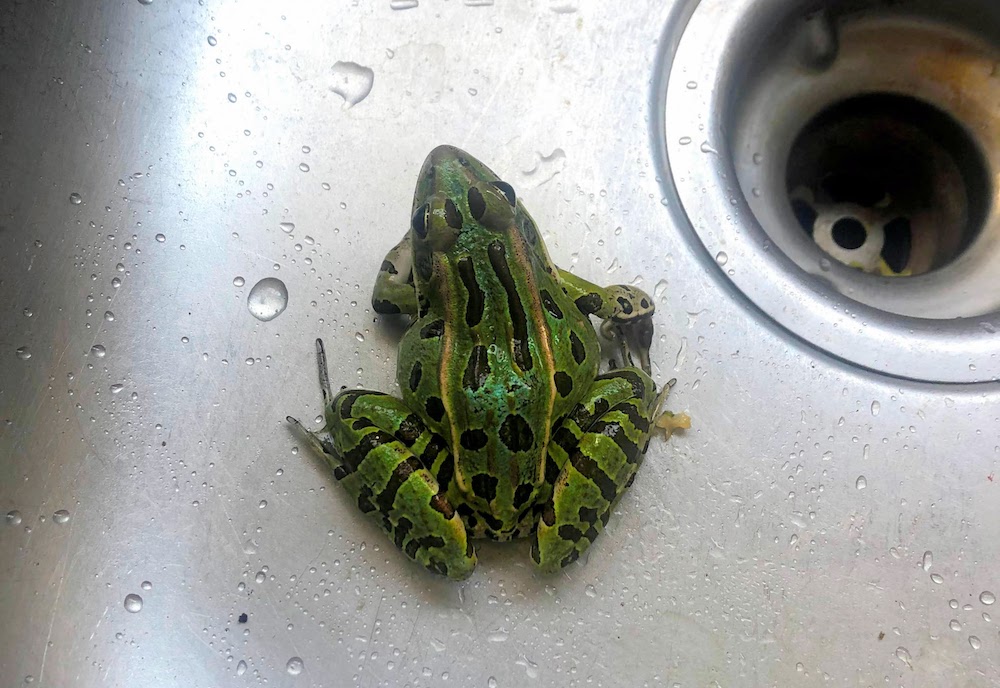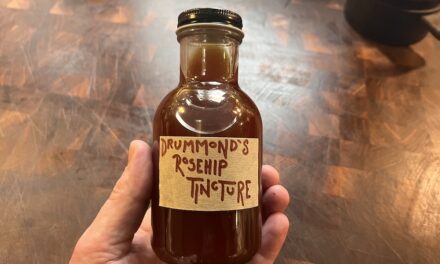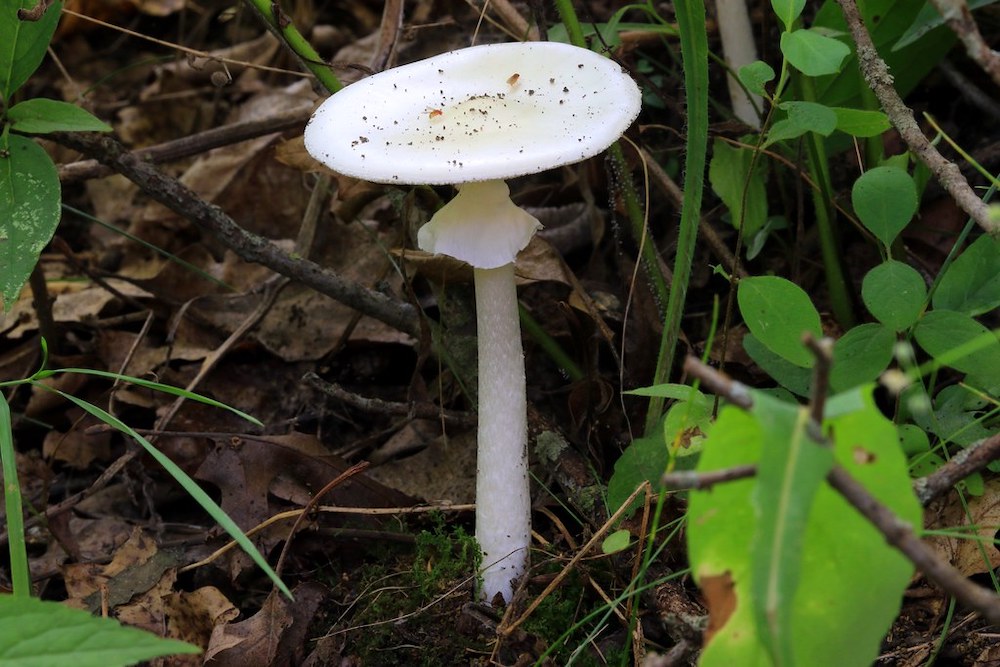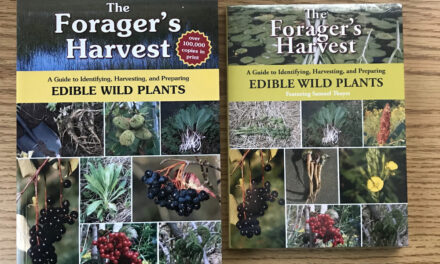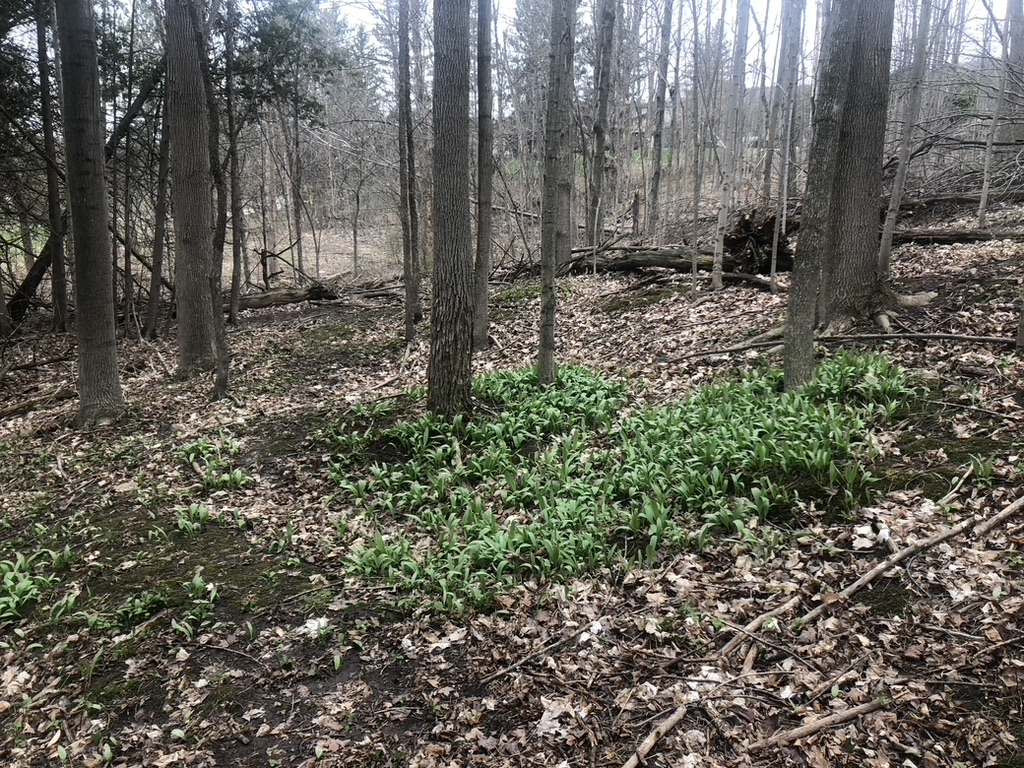
The first ramps of the year, a tiny patch around 120 seconds from our front door. These popped up around three weeks ago, and are almost at the end of their season.
I’ve covered the glorious seasonal treats that are ramps previously for this column, but this year I thought I’d step it up a little regarding their preparation. With the help of The Forager Chef’s Book Of Flora by Alan Bergo, I decided to experiment with Tjeremsha AKA Siberian style fermented ramp leaves.
I was under no illusion that this was going to be a less than pleasantly fragrant proposition, but being no stranger to the somewhat smellier end of the aromatic foodstuffs spectrum, I dove in head first.
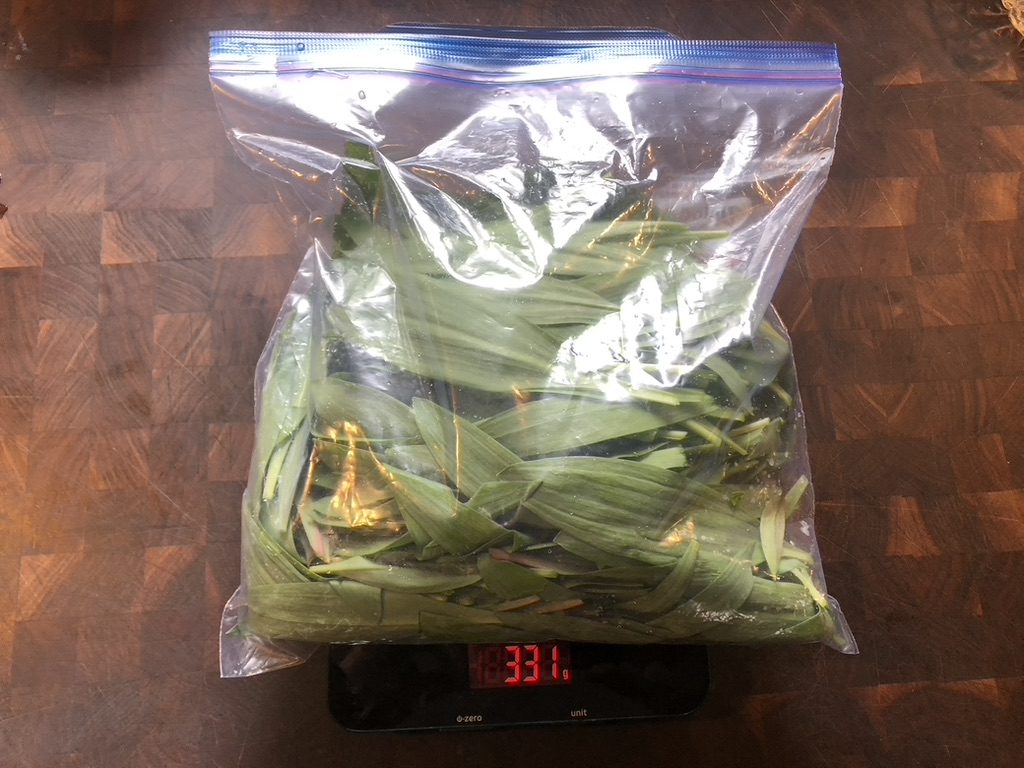
For the last few years I’ve made a decision to only harvest ramp leaves (as opposed to including the bulb), and I’ve found that this greatly improves the health of the ramp patch from year to year. For the purposes of this first experimental batch, I harvested 331g, which turned out to be just over the amount required to fill half of a larger Mason jar. Next time around I’ll try to pick around 600g to fill the whole of a larger jar.
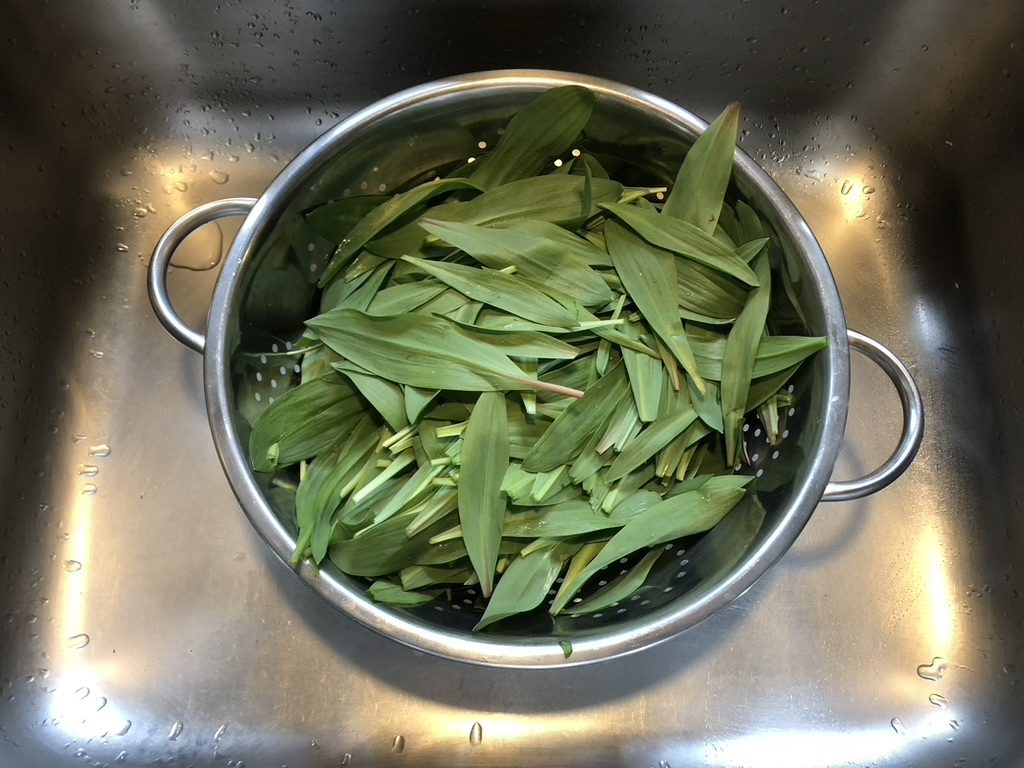
As always, be sure to give them a seriously good wash in cold water, as you never know what may have piddled on them at some point. I usually wash and dry them twice, just to be sure, using a salad spinner to remove any excess moisture.
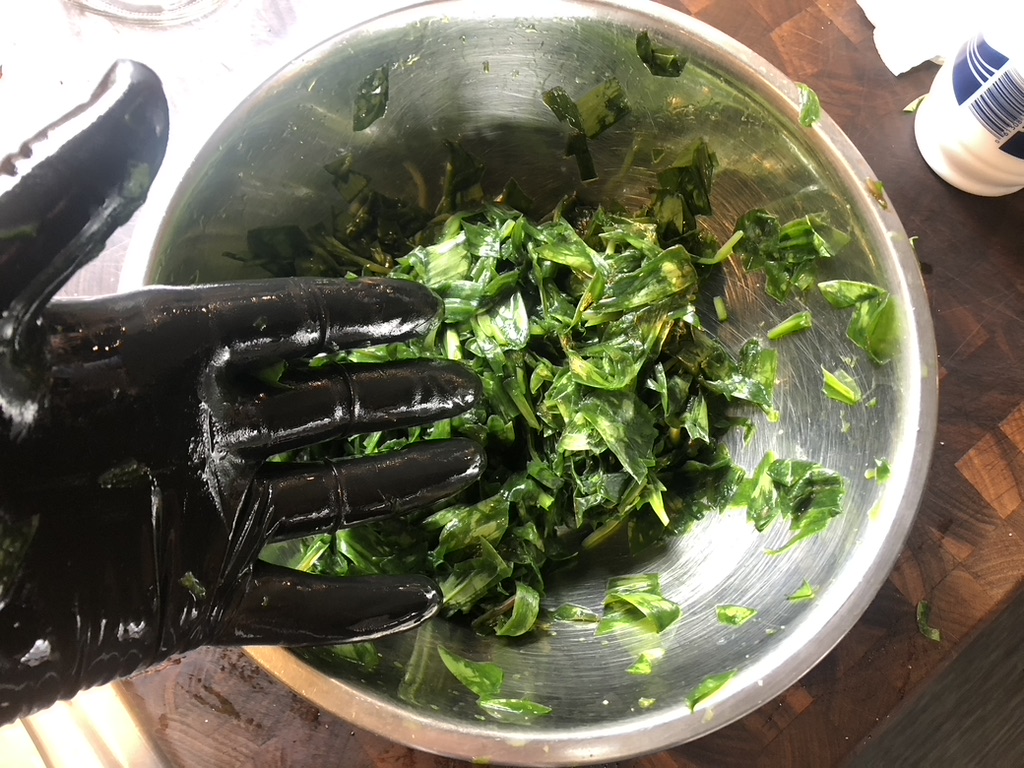
Any excuse to wear black latex gloves… seriously though, your hands will seriously reek if you don’t use some form of protection here. Chop the leaves into 1 inch lengths and place in a deep bowl. Add two teaspoons of salt and gently massage into the leaves. I used pink Himalayan salt and it seems to have worked well. Don’t attempt anything approaching deep tissue massage as the leaves begin to break down quite quickly and one wants to maintain some structural integrity in the end product.
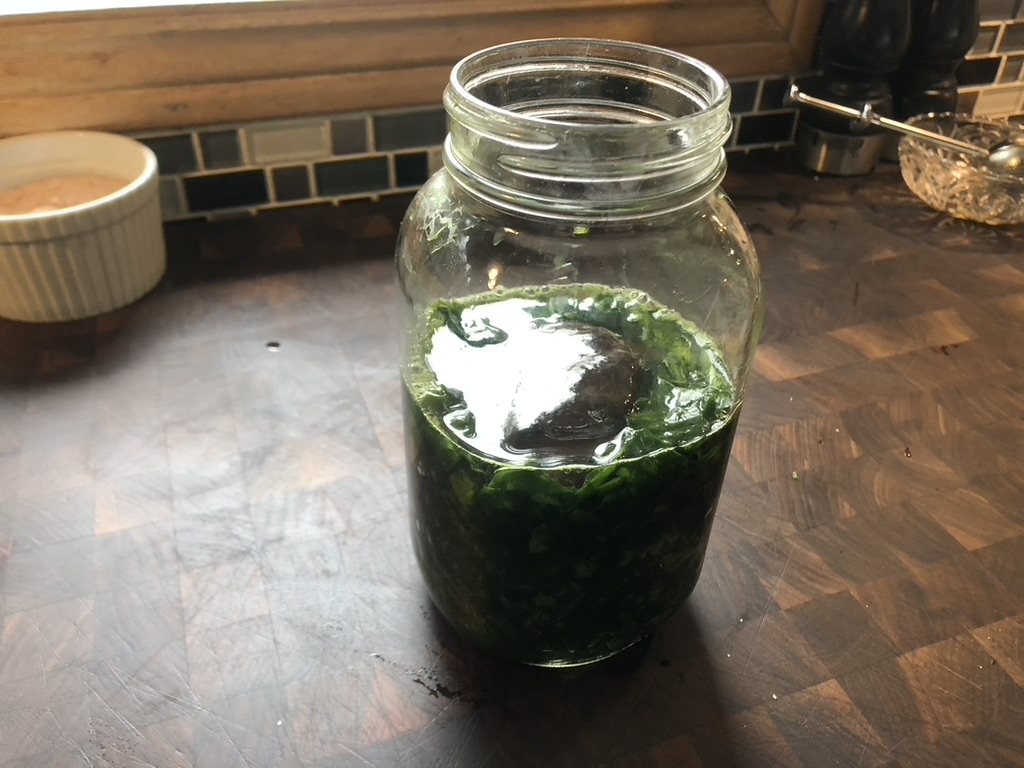
In a pan of boiling water, sterilize your Mason jar and lid, as per any preserves. Weigh the jar without the lid, before adding the chopped and salt massaged ramps. Add just enough cold water to cover the ramps. Weigh the jar again to get the combined weight of the ingredients in grams. Take this number and multiply by 0.03 to get the amount of salt in grams you still need to add for this wet ferment. For example, if your contents weigh 365g then multiply this by 0.03 to get 10.95, so you would add 10.95g of additional salt and stir well.
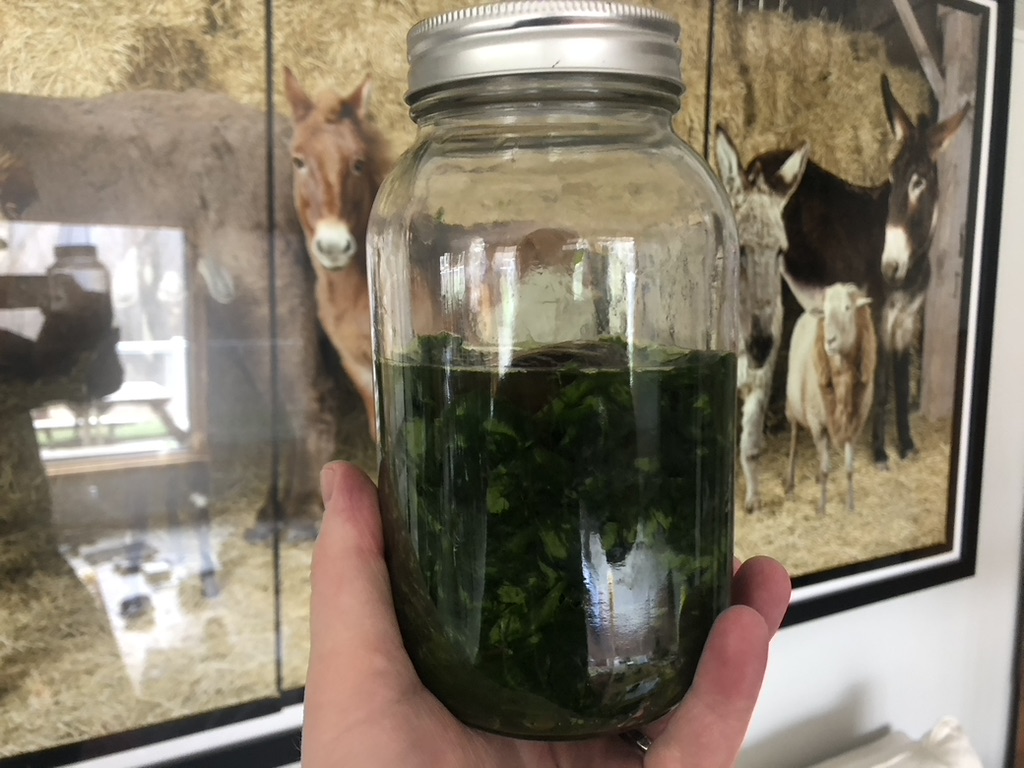
Push the ramps down under the salted water and use a small clean stone to weigh them down under the water. Screw on the lid and place in a cool dry spot for at least two weeks. I’d suggest placing these in your garage or shed if you have access to such. I went back and checked on mine a few times and released the gas created by the ferment. I didn’t fancy an exploding jar of weapons-grade ramps. The smell from this stuff is incredible, and certainly not for the faint of heart/stomach. It’s like garlic on steroids, with an almost truffle-like muskiness. In his book, Bergo states that even experienced fermenters have been somewhat troubled by this particular smell, worrying that their concoction had gone bad, and I can see why. My mother-in-law said it smelled like turpentine…
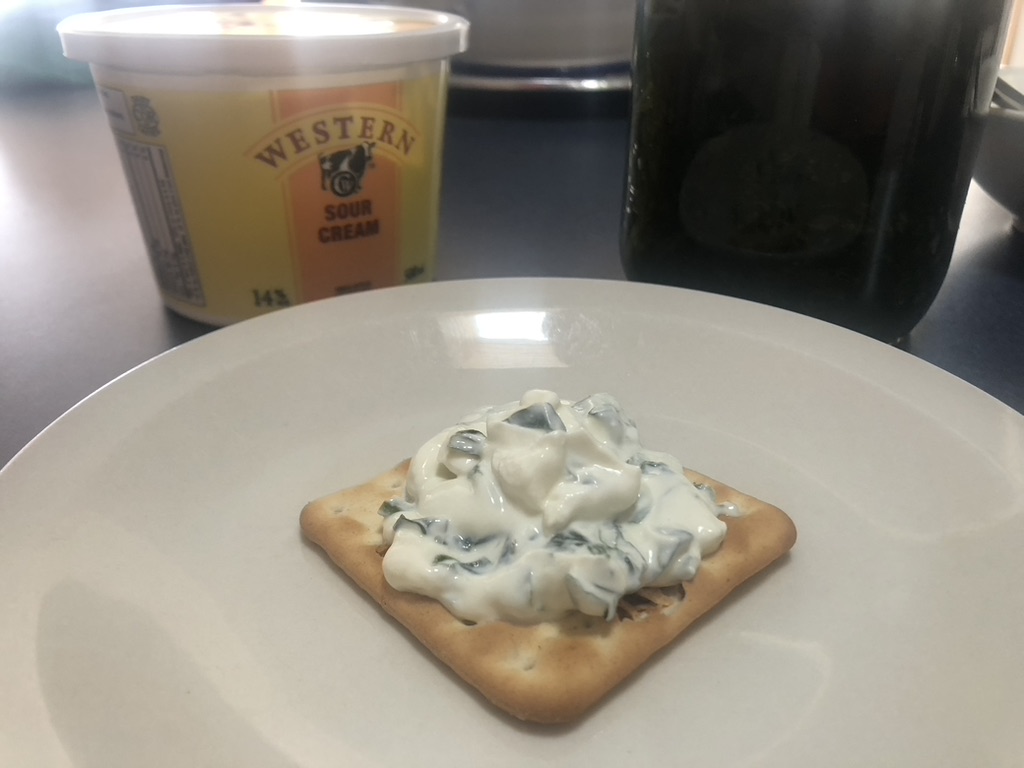
And so two weeks later I opened the Mason jar and I swear it emitted a strange ungodly haze. I persevered with the almighty pong, taking a healthy spoonful of the solids with as little liquid as possible, mixing it into a small bowl of sour cream. Served on a Jacob’s Cream Cracker, it was absolutely bloody sublime; our son told me it was one of the best things he had ever eaten. Although hesitant at first, my wife agreed that this “wild onion caviar” was utterly delicious. I was so very pleased with the results, ranting about them to anyone who would listen. A couple of my more gastronomically adventurous pals asked if I could prepare some for them, so yesterday I went out to harvest the very last of the season’s ramps, and filled four smaller jars. According to Bergo, after two weeks one can place the jars in the fridge and they can be stored indefinitely. I think I’ll be doing this every year from now on.



